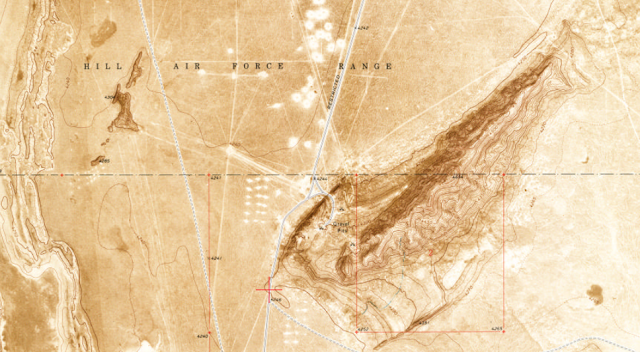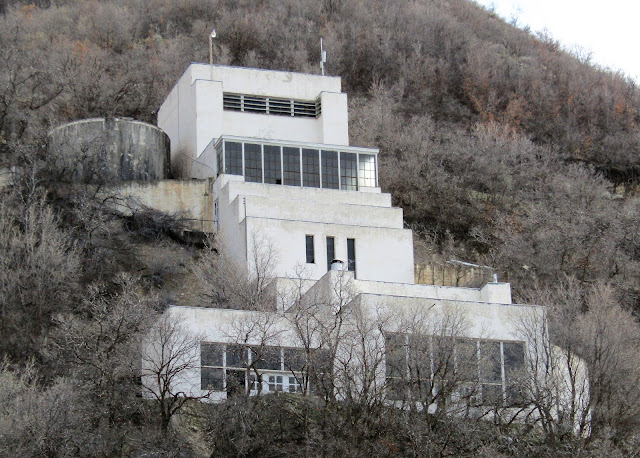Anthrax on the Overland Trail
by Peter
In 1975, cattle in two widely separated areas of northern Utah began to die. In Rush Valley, Tooele County, 25 cattle died in 5 weeks. Public health officials initially suspected arsenic poisoning due to the close proximity of a closed mine. West of Layton, Davis County, at least 12 cattle died in a similar 5 weeks period. In this case, there was no obvious source of contamination as the herd had been unchanged in 6 years and had received no outside fodder, salt, or water. Samples from the affected animals were taken and sent to Utah State University. There, they tested positive for Bacillus anthracis or anthrax.
Interestingly, these outbreaks of anthrax were isolated, affecting only herds in the immediate area, and were not connected to outbreaks in other locales. Researchers determined that the infections were most likely based on the historical uses of the pastures. Anthrax can live and reproduce in soil for many years, periodically infecting available hosts.
The Rush Valley site, on the eastern short of Rush Lake, was the location of Camp Relief, where a US Army detachment under the command of Colonel E.J. Steptoe overwintered their horses and mules in 1854-55. The area continued to be used for pasturing livestock, including the stock of Connor's California Volunteers in 1862.
The Davis County site was located adjacent to and downslope from the old Bluff Trail. This was the principal route taken from Salt Lake City north and was a major thoroughfare for settlers on their way to Oregon. You can visit the old Bluff Trail by following Bluff Road through Layton and Syracuse.
In both locations, Texas longhorns were among the stock pastured. These appear to have been particular carriers of Anthrax and the disease can reoccur in areas where they were pastured even over a century in the past.
The spread of anthrax by southern cattle may have another tie to Utah history. On their way to their eventual murder at Mountain Meadows, the Fancher wagon train was accused of poisoning a group of Pahvant Native Americans at Corn Creek, south of Fillmore. This alleged act of aggression was later used by some of the Mormons involved in the massacre to justify their actions.
However, the timing of the deaths, physiological symptoms, and the difficulty of actually poisoning an open body of water, make the poison hypothesis untenable. Instead, some historians have suggested that an ox from the Fancher company died of anthrax. The disease spread to the Pahvants and cattle pastured around Corn Creek, killing several of the band as well as a teenager from Fillmore.
For other interesting items in the general area, see my posts on the Salt Lake Army Air Force Jeep Ranges, Phantom Wye, the Longest Conveyor Belt in the World, and the World War I Internment Camp at Fort Douglas..
In 1975, cattle in two widely separated areas of northern Utah began to die. In Rush Valley, Tooele County, 25 cattle died in 5 weeks. Public health officials initially suspected arsenic poisoning due to the close proximity of a closed mine. West of Layton, Davis County, at least 12 cattle died in a similar 5 weeks period. In this case, there was no obvious source of contamination as the herd had been unchanged in 6 years and had received no outside fodder, salt, or water. Samples from the affected animals were taken and sent to Utah State University. There, they tested positive for Bacillus anthracis or anthrax.
 |
| Antrax bacilli. Photo courtesy of the CDC. |
Interestingly, these outbreaks of anthrax were isolated, affecting only herds in the immediate area, and were not connected to outbreaks in other locales. Researchers determined that the infections were most likely based on the historical uses of the pastures. Anthrax can live and reproduce in soil for many years, periodically infecting available hosts.
The Rush Valley site, on the eastern short of Rush Lake, was the location of Camp Relief, where a US Army detachment under the command of Colonel E.J. Steptoe overwintered their horses and mules in 1854-55. The area continued to be used for pasturing livestock, including the stock of Connor's California Volunteers in 1862.
The Davis County site was located adjacent to and downslope from the old Bluff Trail. This was the principal route taken from Salt Lake City north and was a major thoroughfare for settlers on their way to Oregon. You can visit the old Bluff Trail by following Bluff Road through Layton and Syracuse.
In both locations, Texas longhorns were among the stock pastured. These appear to have been particular carriers of Anthrax and the disease can reoccur in areas where they were pastured even over a century in the past.
 |
| A Texas Longhorn. Photo by Larry D. Moore [CC BY-SA 3.0 or GFDL], via Wikimedia Commons |
The spread of anthrax by southern cattle may have another tie to Utah history. On their way to their eventual murder at Mountain Meadows, the Fancher wagon train was accused of poisoning a group of Pahvant Native Americans at Corn Creek, south of Fillmore. This alleged act of aggression was later used by some of the Mormons involved in the massacre to justify their actions.
However, the timing of the deaths, physiological symptoms, and the difficulty of actually poisoning an open body of water, make the poison hypothesis untenable. Instead, some historians have suggested that an ox from the Fancher company died of anthrax. The disease spread to the Pahvants and cattle pastured around Corn Creek, killing several of the band as well as a teenager from Fillmore.
For other interesting items in the general area, see my posts on the Salt Lake Army Air Force Jeep Ranges, Phantom Wye, the Longest Conveyor Belt in the World, and the World War I Internment Camp at Fort Douglas..


Comments
Post a Comment